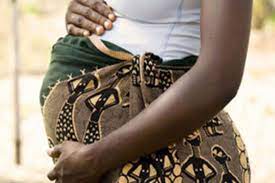Deal with teenage pregnancies

What you need to know:
- Beyond health consequences, early pregnancy among teenagers carries significant social and economic consequences. Teenage mothers often face stigma and rejection from their peers, families, and communities denying them a healthy childhood.
The 2022 Uganda Demographic and Health Survey highlights that one in four (24%) girls aged 15-19 years are either mothers or pregnant with their first child, a trend that has persisted for the past 10 years.
Teenage pregnancy has far-reaching consequences not only for the individual and her family but for the economy. It exposes girls to several health hazards that result in issues during pregnancy and delivery endangering both the mother and the child.
Teen mothers face higher risks of developing delivery-related complications such as eclampsia, fistula, and other systemic infections.
Such girls are at an increased risk of death because of these complications with teenage pregnancy contributing 28 percent to maternal deaths according to a 2021 UNICEF study.
As far as children born to teenage girls are concerned, such children are at a higher risk of being born premature and underweight.
If the debates about contraception use and the significance of sex education, it appears we’re giving up on our teenage girls. Should we do so, it will be a costly mistake.
Beyond health consequences, early pregnancy among teenagers carries significant social and economic consequences. Teenage mothers often face stigma and rejection from their peers, families, and communities denying them a healthy childhood.
Teen mothers are also more often likely to drop out of school, affecting their employment and livelihood prospects and widening the gap between girls’ and boys’ education attainment. It also exposes individuals to domestic violence and makes access to reproductive health services difficult.
Similarly, such girls’ dependence limits their ability to make independent decisions and leaves many vulnerable to abuse or neglect.
Teenage pregnancies cost Uganda in income and future skilled human capital loss. The National Planning Authority estimates that the government must spend more than Shs645 billion annually to take care of teenage mothers’ health care and their children’s education.
There are several initiatives to curb the vice albeit with minimal results. To tackle teenage pregnancy in Uganda, a multifaceted approach including legal reforms, education, economic empowerment, and community engagement is required.
The existing legislative framework against child marriage, as a major contributor to teenage pregnancies, should be strengthened. There is a need to align existing laws and policies surrounding the age of marriage to eliminate loopholes.
In its current form, the existing legal framework is complex and leaves room for exploitation. For example, the Customary Marriage Act (1973), Hindu Marriage and Divorce Act (1961), and Marriage and Divorce of Mohammedans Act (1906) allow the marriage of girls aged 16 in contravention of the constitution, which stipulates 18 as the legal age of marriage. Such incoherences need to be ironed out and existing legal provisions comprehensively enforced.
Significant nationwide awareness efforts are needed to educate the most susceptible areas, such as Wakiso, Kampala, Kasese, and Kamuli about the negative repercussions of teenage pregnancies, with a focus on sexual and reproductive health for young girls. Different avenues such as media, schools, village-level barazas, and health centers can be employed to reach different categories of young girls and the wider community.
Multi-sectoral programmes to curb the vice should be introduced and scaled up. For example, coupling health awareness campaigns with financial literacy, and vocational skills training. This also entails involving different key actors that are crucial in the fight against the vice. Actively involve Local Council structures, and religious and cultural leaders in the fight against teenage pregnancy and early marriages.
Moreover, many projects to empower girls have been promoted without integrating boys and men in efforts to eliminate teenage pregnancy. More attempts to encourage boys and men to become allies in promoting gender equality and advocating against child marriage and teenage pregnancy may result in a more comprehensive solution and support for all other activities.
There is a need to invest in data generation so that targeted and appropriate interventions are designed to reach key targets. With data availability, the most vulnerable girls will no longer be considered as a homogenous group with blanket interventions and more impact can then be achieved from the different targeted interventions that will be designed.
Finally, teenage mothers should be provided with avenues to return to school so that they are not doomed to a vicious cycle of poverty and sub-optimal employment.
Linda Nakato, Research fellow at EPRC




